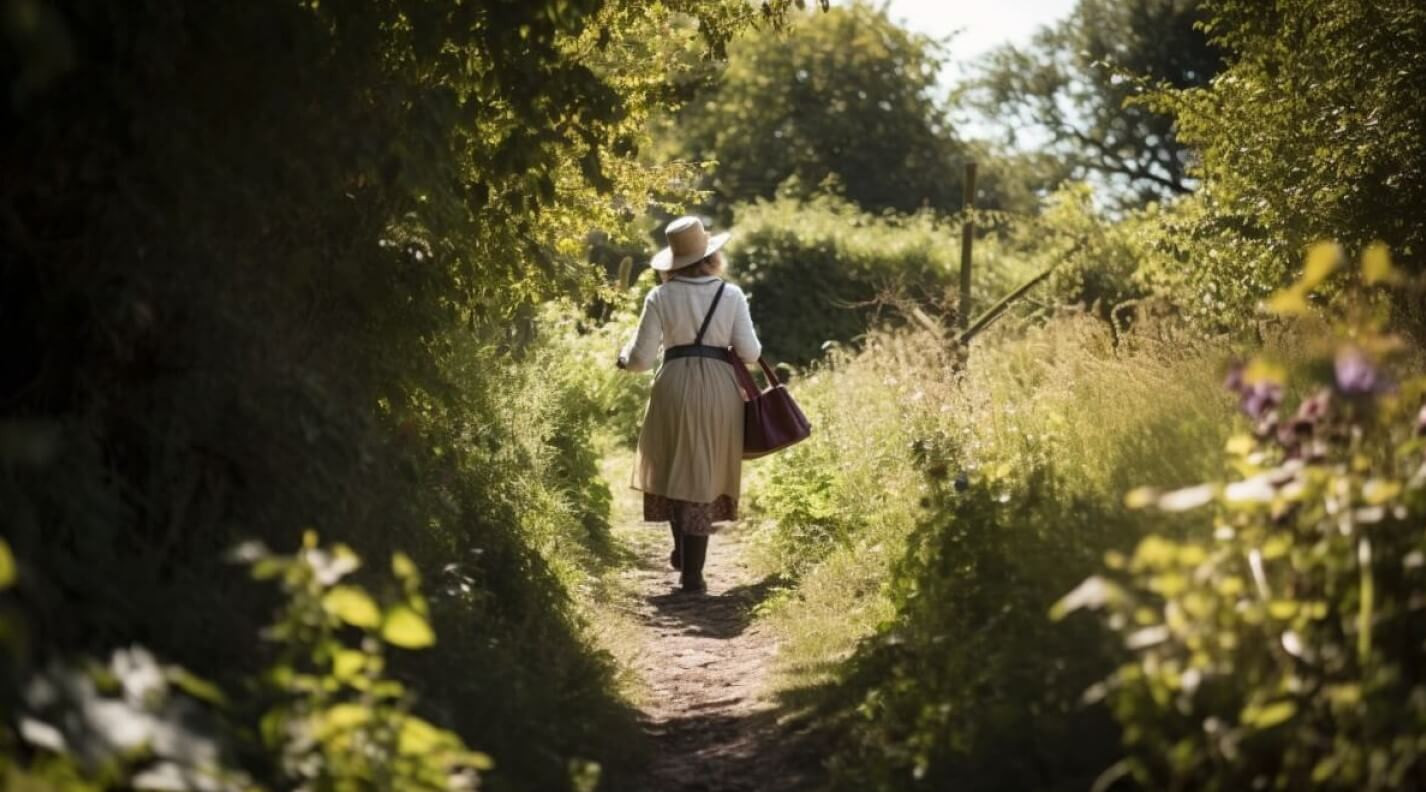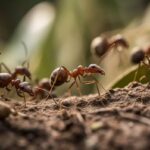Would you prefer to listen to a short podcast discussion about this article? Click on the audio below.
Foraging for wild food in hedgerows is an age-old practice that has seen a resurgence in recent years. It is a way to source fresh, organic produce for free and encourages us to connect with nature and learn more about the world around us. But before you head out to the hedgerows with your basket in tow, it’s important to know what you’re looking for and the ethical and safety considerations involved. In this ultimate guide to foraging for free food in UK hedgerows, we’ll take you through everything you need to know to safely and successfully gather wild food and make the most of this rewarding and sustainable pastime.
Table of Contents
1. Introduction to Foraging and Its Benefits
What is Foraging, and Why is it Becoming Popular?
Foraging is the practice of gathering wild food, such as berries, nuts, and plants, from the natural environment. It’s becoming more and more popular as people look to reconnect with nature, save money on groceries, and eat a wider variety of fresh, healthy foods. Foraging is a sustainable and fun way to explore the outdoors and learn more about the natural world around us.
The Benefits of Foraging for Your Health and Your Wallet
Foraging can provide a range of health benefits, such as increasing your exposure to fresh air and sunlight, providing exercise, and introducing new and diverse nutrients into your diet. It can also be a great way to save money and reduce your carbon footprint by sourcing local, seasonal produce. Plus, foraging is a fantastic way to enjoy the beauty of nature and breathe new life into your outdoor adventures.
2. Identifying Common Edible Plants and Berries Found in UK Hedgerows
Common Edible Plants and Their Uses
There are many delicious and nutritious plants and berries that can be found in UK hedgerows, including blackberries, elderberries, hawthorn berries, rose hips, wild garlic, and nettles, to name a few. Each has its distinct taste and nutritional profile and can be used in various ways, such as making jams, teas, or soups.
Identifying Safe and Poisonous Berries and Mushrooms
It’s important to be able to identify safe and poisonous berries and mushrooms when foraging. Some common poisonous berries to avoid in the UK include deadly nightshade, yew berries, and holly berries. Poisonous mushrooms can be even more difficult to identify, so it’s best to stick to easily recognizable and safe varieties, such as field mushrooms and parasol mushrooms.
3. Safety Considerations and Ethical Foraging Practices
Understanding the Dangers of Foraging and How to Avoid Them
Foraging can be dangerous if you don’t take the proper precautions. For example, being aware of poisonous plants and mushrooms and avoiding areas sprayed with chemicals is important. You should also wear protective clothing and avoid harvesting plants near busy roads. Always research the area you plan to forage in beforehand and be aware of any potential dangers.
The Importance of Ethical Foraging Practices and Preserving Nature
Foraging can be a great way to connect with and appreciate nature, but it’s important to harvest in a responsible and sustainable way. Make sure to only take what you need, leaving enough for wildlife and future generations. Don’t damage the plants or their surrounding environment, and be respectful of other foragers and landowners. Remember that foraging is a privilege, not a right, and protecting and preserving our natural resources is up to us.
4. Tips for Successful Foraging Trips and Planning Ahead
How to Plan for a Successful Foraging Trip
Before heading out on a foraging trip, be sure to do your research and plan ahead. Know what you’re looking for and where to find it, and make sure to bring along the necessary tools and equipment (such as a basket or bag, scissors, and gloves). Check the weather forecast and dress appropriately. Additionally, it’s important to let someone know where you’re going and when you plan to return, just in case something should happen.
Tools and Equipment You’ll Need for Your Trip to The Countryside
When foraging, having the right tools and equipment is important to ensure your safety and make the process easier. Some essential items include a basket or bag to collect your harvest, scissors or snips to cut plants and fruits, gloves to protect your hands, and a field guide or smartphone app to help you identify what you find. You may also want to bring along a water bottle, insect repellent, and sunscreen.
5. Recipes and cooking ideas for foraged foods
Simple and delicious foraged food recipes
When it comes to foraged foods, simplicity is key. These ingredients are packed with flavour, so there’s no need to overcomplicate things. Here are a few recipes to get you started:
– Nettle soup: Nettles are one of the most versatile foraged foods out there. To make a simple soup, sauté nettles and onions in butter, add some stock, and blend until smooth.
– Wild garlic pesto: Wild garlic is abundant in the spring and makes a fantastic pesto. Simply blend wild garlic with some nuts, cheese, olive oil, and lemon juice.
– Elderflower cordial: Elderflowers are also very common in the UK, and they make a deliciously fragrant cordial. Boil water and sugar together, add some citric acid, and steep elderflowers in the mixture overnight. Strain and bottle.
Creative cooking ideas for using foraged foods
Foraged foods can be used in all kinds of dishes, from salads to stews. Here are a few ideas to inspire you:
– Add chopped nettles to scrambled eggs for a nutrient-packed breakfast.
– Use wild garlic instead of regular garlic in your pasta dishes for a subtle, garlicky flavour.
– Make a salad with foraged leaves like sorrel, dandelion, and chickweed, and top with a simple dressing of olive oil, lemon juice, and honey.
6. Preservation methods for foraged foods and extending their use
Methods for preserving and storing foraged foods
Foraged foods don’t last as long as store-bought produce, so it’s important to know how to preserve them. Here are a few methods:
– Drying: Hang herbs like nettles, thyme, and rosemary in a warm, dry place to dry them out. Store in airtight containers.
– Freezing: Berries and other fruits can be frozen for later use. Simply wash, dry, and freeze in airtight containers.
– Canning: Some foraged foods, like elderberries and blackberries, can be canned in jars for long-term storage.
Maximizing the use of your foraged foods
Foraged foods are often abundant, but they can also be fleeting. Here are a few tips for making the most of your haul:
– Make a big batch of soup or stew and freeze leftovers for later.
– Add foraged fruits to your morning oatmeal or yoghurt for a healthy and flavorful breakfast.
– Experiment with foraged ingredients in your favourite recipes. You might be surprised by how well they work!
7. Exploring the wider world of foraging and establishing a deeper connection with nature
Discovering other foraging opportunities beyond hedgerows
While hedgerows are a fantastic source of foraged foods, many other places exist to explore. Here are a few ideas:
– Forests: Look for wild mushrooms and berries.
– Beaches: Seaweed and molluscs are abundant on many UK beaches.
– Parks and gardens: Many urban areas have edible plants growing in public spaces.
The spiritual and emotional benefits of connecting with nature
Foraging isn’t just about free food – it’s also a way to connect with nature and tap into something deeper. Here are a few benefits of foraging:
– Mindfulness: Foraging requires you to be present and aware of your surroundings.
– Connection: Foraging can help you feel connected to the natural world around you.
– Gratitude: Finding food in the wild can be a humbling experience that fosters gratitude and appreciation for nature. Foraging is a sustainable and rewarding way to source free food, connect with nature, and learn more about the world around us. By following the tips and guidelines outlined in this ultimate guide, you can safely and ethically forage for wild food in UK hedgerows and beyond. Whether you’re a seasoned forager or a beginner, we hope this guide has inspired you to get out there and explore the bountiful world of wild food. Happy foraging!
FAQ
Is foraging legal in the UK?
Yes, foraging for personal use is legal in the UK, as long as you have the landowner’s permission and only take what you need. However, foraging in protected areas, such as nature reserves, is prohibited, and certain plants and mushrooms are protected by law, so it’s important to do your research and follow ethical foraging guidelines.
What should I bring with me on a trip?
It’s a good idea to bring a sturdy basket or bag to collect your foraged foods, as well as gloves, scissors or a knife, and a field guide to help you identify plants and berries. Depending on the season and location, you may also want to bring a water bottle, snacks, sunscreen, or insect repellent.
How do I know if a plant or berry is safe to eat?
Before consuming any wild food, it’s essential to correctly identify the plant or berry and ensure that it’s safe to eat. Stick to commonly foraged plants and berries, and avoid anything with a bitter or unpleasant taste and any unfamiliar or unknown species. If in doubt, consult a field guide or a local expert, and start with small quantities to test for any adverse reactions.
How can I cook and preserve my gathered foods?
There are many ways to cook and preserve foraged foods, from simple salads and soups to jams, pickles, and ferments. Some methods include drying, freezing, canning, and pickling. Be sure to follow proper food safety guidelines and store your foraged foods correctly to maximize their shelf life.
If you require any assistance with this article, please do not hesitate to Contact Us






















